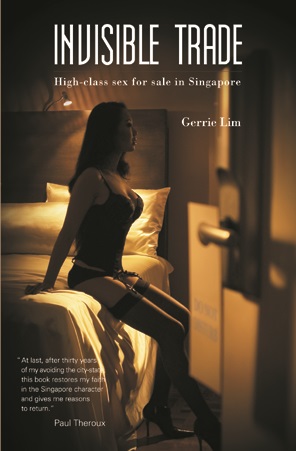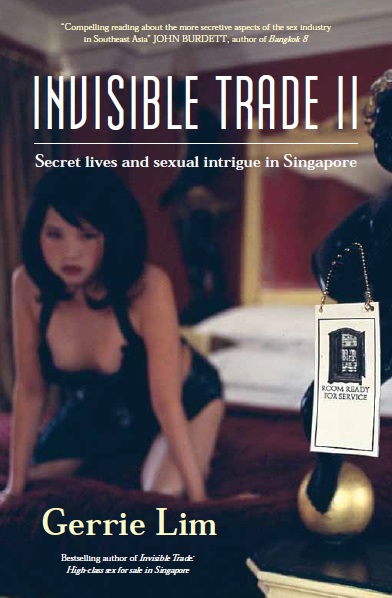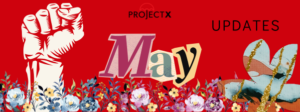Amid the flurry of interest that greeted my two Invisible Trade books when they were published, one of the most frequently asked questions aimed at me during book signings and press interviews was, predictably, one of the most obvious: “Are the girls on the covers of your books real escorts?”
I’ll grant that it’s something to be curious about, especially since both books featured high-end escorts telling me about their saucy experiences in Singapore – and while those among us who have done work in gender studies or (in my case) have lectured about sex work at universities like to talk about theories of sexual pleasure (in say the “simulacra” of Jean Baudrillaud or the “jouissance” of Jacques Lacan), most ordinary people simply want to comprehend the “otherness” of the woman who happens to be a sex worker. Their questions abound, like: “Is she a normal person?” “Is she for real?”
I accept that it’s natural for people who aren’t around sex workers to think like this. Of course, I myself passed that point a very long time ago but I understand the often tantalizing frisson hovering around this phenomenon. And for those of you still curious, the answer is this: The girl on the cover of the first Invisible Trade book is not a real-life escort – she’s a model, posing as one on an actual hotel room bed in Singapore — while the girl on the second book is, in fact, a real escort featured in the text. The twist to that tale was that the photographer had shot her a tad off-focus — enough so she looked like a generic Asian girl from anywhere — though she was also posing in a real hotel room, this time one in London.

Also, on the first cover, a sign familiar to all hotel rooms hangs on the doorknob, discreetly warning: “Do Not Disturb.” However, the sign on the second book cover is far more suggestive: “Room Ready for Service.” (Admittedly, it was cropped and repositioned to dangle strategically from an ornament situated elsewhere in the room.) Both books had subtitles that I myself appended, both self-explanatory: “High-Class Sex for Sale in Singapore” for Invisible Trade and “Secret Lives and Sexual Intrigue in Singapore” in the case of Invisible Trade 2.

I was particularly proud of the second cover because of the intentional use of a real escort facing the camera, with her living out her “secret life” (and, for those who have already read Invisible Trade 2, she’s named Alexandra in Chapter 7). Still, what interested me more was the sense of ambience, the notion of creating a mood evocative of clandestine meetings without being seen as seedy or sleazy. I made this my mission during the post-production process; in the first book, for example, I insisted that the image be cropped so that the model’s high heels were shown in their entirely, albeit in side profile, because those shoes are emblematic of her expensive lifestyle.
Furthermore, the bed she sat on was a double bed — though in actuality it was a single bed digitally enhanced to look like a double, a master stroke of art direction underscoring my own sex-positive view of escort work. I openly believe that “sex work is skilled work” and love images of elegantly clad young women who might well cater to more than our baser instincts without appearing tawdry.
Beauty is, after all, always in the eye of the beholder. And those being beheld, for both the model and the escort approved the use of their images on both book covers, knowing fully what they were consenting to. In doing so, they did me proud as a chronicler of the modern demimonde and certainly validated my own courage in the steadfast defence of sex work, which ultimately (and perhaps ironically) should really need no defending.
—
Gerrie Lim is the bestselling author of Invisible Trade and Invisible Trade II, In Lust We Trust, Singapore Rebel, Inside The Outsider and Idol to Icon. He holds an MA in Print Journalism from the University of Southern California and has written for Billboard, Details, Harper’s Bazaar, Elle, Playboy, Penthouse, The San Diego Union-Tribune, the South China Morning Post, The Wall Street Journal, and The Asian Wall Street Journal. He divides his time between Hong Kong and Singapore.





